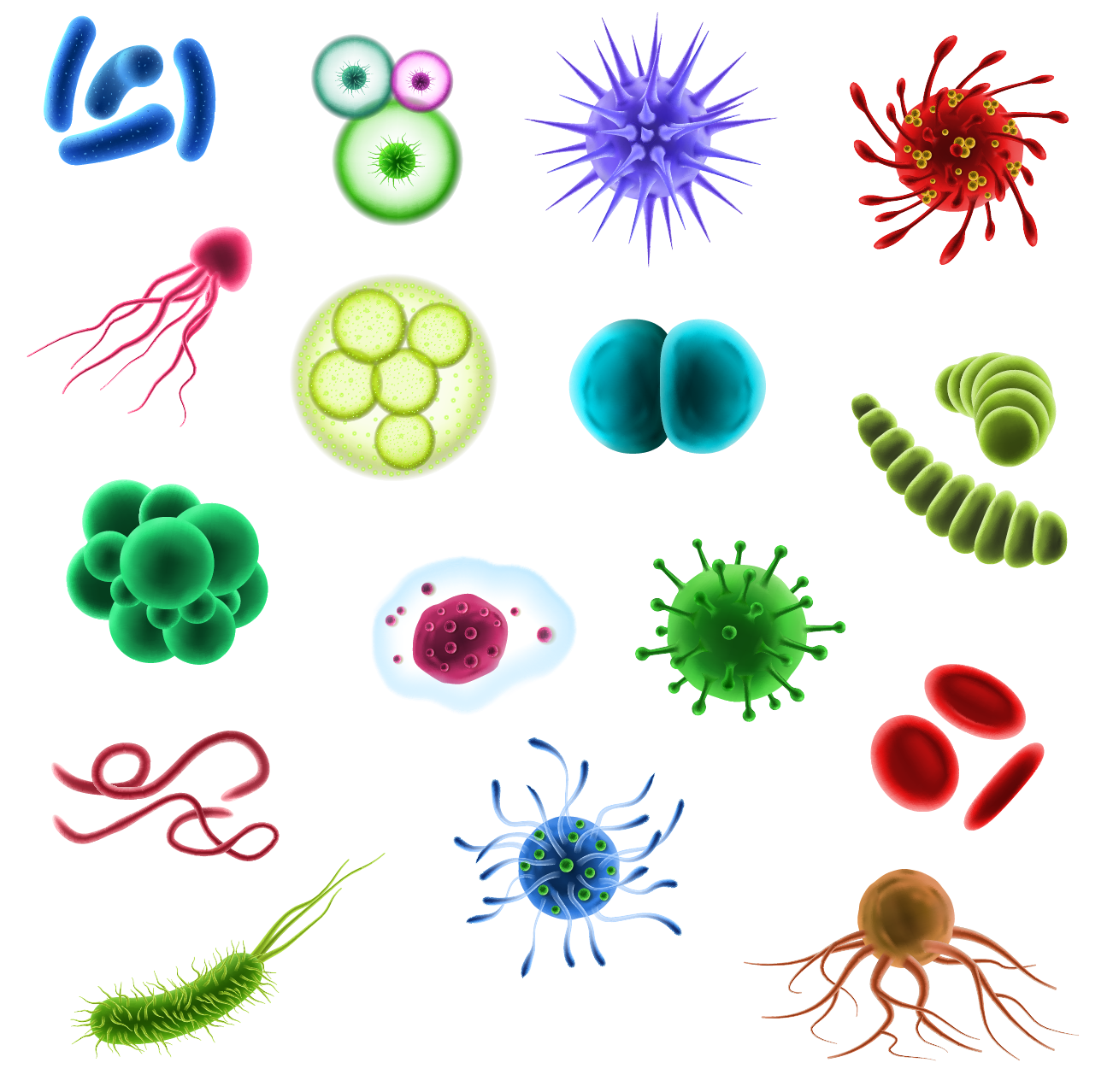
We live in a microbial world…
Find Invisible Friends here!
Invisible Friends includes the following topics… and more!
Human behaviour
Microbes in our gut can communicate with our brain through the microbiota-gut-brain axis. This two-way communication highway links the gastrointestinal tract to the central nervous system. In animal models, gut microbes have been shown to influence sexual preference, food decisions, and aspects of mental health. A remarkable 95% of the body’s serotonin (“the happy hormone”) is found in the gut, and microbes have a crucial role in its synthesis. New theories, including the Lovebug Effect and the Holobiont Blindspot, are discussed, and the world-renown Professor John F. Cryan provides exciting insights into the gut-brain axis!
Human health
Microbes from the environment play a vital role in training and developing our immune systems. They stimulate the production of tiny armies of immune cells so that we can fend off pathogens. Some of these microbes are referred to as ‘Old Friends’ because we’ve co-evolved with them, and they provide essential benefits. Microbes also have critical roles in breaking down our food, providing energy, and various health-sustaining chemicals. World-leading immunologist Professor Graham Rook, who posited the Old Friends Hypothesis, talks to me about how invisible friends educate our immune systems from the day we’re born.
Social equity
It is becoming increasingly clear that human activities, policies, and environmental change affect how we are exposed to different microbes - whether they are beneficial (health-promoting) or pathogenic (disease-causing) assemblages. Therefore, microbes have context in the realms of social equity – because some social groups may be unequally exposed to 'good’ or ‘bad’ microbes. Thus, they may receive an unequal benefit or dis-benefit. Leading microbiome scientist and founder of the Microbes and Social Equity working group Dr. Sue Ishaq explains how microbes affect societies disproportionately.
Ecosystem health and restoration
Microbes are the foundations of our ecosystems. They have a plethora of functional roles, for example, in plant health and communication (trees can talk to each other through microbes), in nutrient cycling (storing and releasing carbon and nitrogen) and even in climate regulation. We can view organisms such as trees, humans, birds, and bees as ‘holobionts’ - that is, they are a host plus trillions of symbiotic microbes that form a functional ecological unit. Without microbes, the ecosystems around us – including biodiversity – would collapse. World-leading restoration scientist Dr. Martin Breed explains why and how we can help to restore ecosystems using cutting-edge microbiome science. I also discuss my trip to a regenerative agriculture farm!
Bio-integrated design
Humans were not the first organism to generate electricity… You guessed it - microbes were, and they were doing it millions of years ago! Microbes can also munch away pollution and even form new building materials. Pre- and probiotic materials are being developed to enhance the quality of the living environment. Microbes are also integral to sustaining nature in our towns and cities. Find out more about how microbes with the above abilities contribute to new forms of urban architecture through ‘bio-integrated design’ applications. A new, holistic, multi-species way of thinking about our urban ecosystems is also discussed.
Nature connectedness
To appreciate microbes and to maximise the benefits they provide, I believe we need to spend more time reconnecting with the natural world. I will showcase the latest research in a psychology-based research field called ‘nature connectedness’, which describes a person’s emotional, cognitive and experiential connection with the natural world. Additionally, in this chapter, I highlight activities that everyone can do to enhance their connectedness to nature. I believe enhancing nature connectedness is essential, particularly as we face the climate and biodiversity crises – which includes the unseen biodiversity, our invisible friends.

